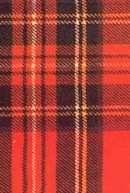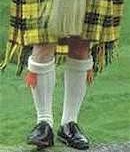|
EL BOLETIN DE INGLES
AMERICANO PREFERIDO POR LOS HISPANOPARLANTES |
|
OM
News # 97 - Delivered to 42845 subscribers |
|
ISSN 1668-4877
February
1, 2005 |
|
Hello friends. We welcome new
subscribers who are willing to learn and practise English.
In this issue, an interesting "Scottish style" article and the
announcement of a new draw!! If you like our portal, please
RATE US by
CLICKING
HERE.
See you again on February 15.
Hola
amigas/os: Damos la bienvenida a los nuevos suscriptores que se acercan
deseosos de practicar y aprender inglés. En esta entrega,
un interesante artículo "a la escocesa" y el anuncio de un nuevo sorteo!!
Si te agrada nuestro portal,
CALIFICANOS
PULSANDO
AQUI.
Nos vemos el 15 de Febrero. |
|
IN
THIS ISSUE: |
|
Tartan for the
Scottish Clans
History, colours and patterns |
|
OM Lucky
Five special prizes:
New draw
on February 23 |
|
OM Shopping
Our special offer New Year 2005 |
|
|
|
|
|

|
TARTAN
FOR THE SCOTTISH CLANS.
From the very earliest times the
patterned
dress of warlike
Scottish highlanders
struck fear
into their neighbours, the Ancient Britons who wore trousers. This early
cloth was known as plaid.
It was coloured with dyes made
from earth and plants which grew nearby. The colour of the cloth depended
on the plants available locally.
So the tradition arose of different
patterns
and colours for each clan, or family group. The oldest surviving piece of
Scottish woollen checked cloth is the Falkirk tartan, which is thought to be
2,250 years old. |
|
COLOURS
AND PATTERNS
The number of colours in the tartan showed the rank or position of the
wearer:
One colour – a servant;
Two colours – a farmer;
Three colours – an officer;
Five colours – a chieftain;
Six colours – a poet;
Seven colours – a chief.
There are also variations of the patterns and colours of the tartans that
are used for different occasions. The dress tartan will be a
brightly coloured version for wearing to special occasions. This is in
contrast to the hunting
tartan that uses
duller
colours to avoid being seen by the hunted animals. As well as
tartans that show your membership of a clan, there are others that can be
worn by anyone living in a certain district. There are also two special
tartans known as the free sett, which are the Royal Stewart (see picture above) and Black Watch tartans. These are allowed to be worn by everyone. |
|
KILTS
Kilts are
in fact a modern invention. An Englishman, Thomas Rawlinson, living in
Lochaber around 1725 noticed that his workers in the iron-works were
obstructed
by the upper part of their plaid. He
cut off
this upper part, leaving the kilt we recognize today. For some reason it
caught on,
and one of the first great chieftains to wear one was MacDonnell of
Glengarry. |
 |
|
ROYALTY
AND TARTAN
In the 18th century, tartan was used as a symbol of Scottish power by
Bonnie Prince Charlie, a famous Scottish prince, who appeared at a
grand ball
in Edinburgh in full Highland dress. After his rebellion against the
English, tartan was
banned in
Scotland for 35 years.
By the 19th century, the romance of the tartan was kept alive by the
popular novels of Sir Walter Scott. He organised a tartan display on the
royal visit of the British king, George IV. The king surprised everybody
by wearing a highland tartan himself.
Queen Victoria decorated her castle in Balmoral with tartan and her
husband, Prince Albert, designed the Balmoral tartan. To this day the
Royal family are the only ones allowed to wear it. Queen Victoria herself
helped to make tartan popular for ladies to wear when she changed the red
background of the Royal Stewart tartan to white. Today, Queen Elizabeth,
Princess Anne and Prince Charles are enthusiastic wearers
of tartan. |
|
WEARING
TARTAN
Although you should be descended from the original clan to wear their
tartan, these days most Scots do not
mind if you wear any tartan. It helps if you know the name of
the tartan and a little about it, in case someone
questions
your right to wear it. If you wish to respect the traditions of the
tartan, wear one of the free tartans, or have your very own made for you.
New district tartans have been found as far away from Scotland as Manitoba
and Saskatchewan in Canada. |
|
GLOSSARY: tartan: tartán (tejido
escocés); clans = families: clanes, familias; patterned:
muestras, modelos; warlike: bélico, belicoso, guerrero;
struck fear: producía temor; plaid:
manta escocesa, a cuadros; dyes: tinturas; arose: surgió; patterns:
diseños, dibujos; is thought to be = is believed to be:
se cree que tiene; chieftain: cacique de tribu o clan;
hunting tartan: tartán para ir de caza; duller colours:
colores más apagados;
kilt:
pollera escocesa; iron-works: fundiciones de
hierro; obstructed: obstaculizados, molestos; cut off:
recortó; caught on: se impuso, gustó; grand ball:
baile de gala; banned = prohibited: prohibido, censurado;
wearer = user: el que lleva o usa algo; do not mind = do
not care: no les importa, no les incomoda;
questions: le cuestione. |
|
|

Click on the image
to visit this section |
The
article and glossary above will be used as a basis for our OM LUCKY draw on
February 23, 2005.
So please, STUDY all the specific vocabulary involved.
More info about this draw in
our next OM News!!
El artículo y glosario previos serán utilizados como base para nuestro
sorteo de OM LUCKY del 23 de Febrero de 2005. Por lo tanto, por favor ESTUDIA
todo el vocabulario específico. Más información sobre este nuevo sorteo en
nuestro próximo boletín!! |
|
|
next update: february 15, 2005 |
|
|
OM NEWS es una publicación
quincenal de distribución gratuita perteneciente al portal OM Personal
Multimedia English
www.ompersonal.com.ar. Responsable: Orlando Moure, Borges 2485, Piso
12, Dto. A, CP C1425FFI, Ciudad Autónoma de Buenos Aires, República
Argentina. |
|
|
|
|
|